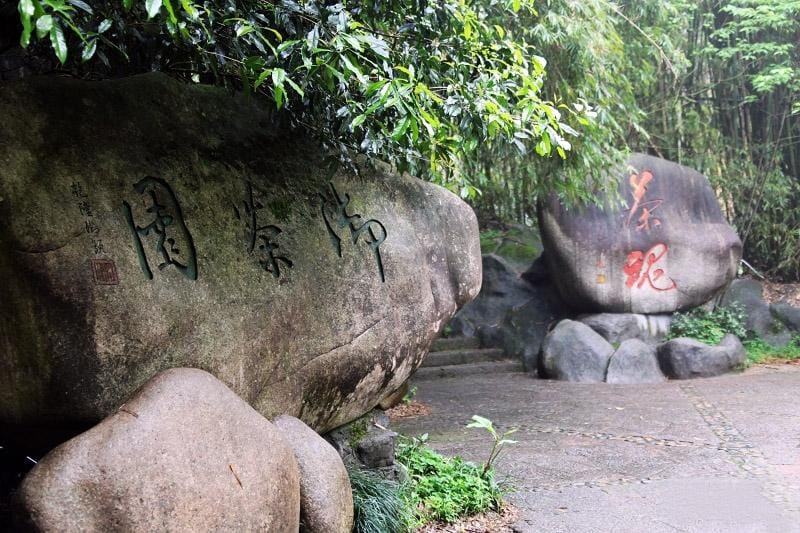|
As with many aspects of ancient China, the exact origins of Wuyi tea are shrouded in mystery and lost in the mists of time. Most scientists and historians agree that tea itself originated in China around five thousand years ago - it’s something which has been constant throughout the entire human history of this part of Asia. Wuyi and Oolong teas however, with their fermented flavour and precise characteristics, were almost certainly first drunk in the 14th century, when tea drinking became more than a simple combination of dried leaves and hot water. The oxidation process, which has always been a major factor in bringing forward the delightful flavour of Wuyi tea, most probably arose accidentally. Legend has it that a man named Wulong found himself distracted during the tea harvest, and allowed the tea leaves to oxidise in the sunshine. However, upon tasting what he assumed was spoiled tea, he discovered that he’d unwittingly invented a new type of delicious, revitalising tea, which quickly spread in popularity. Wuyi Tea in The Qing dynasty Wuyi and other Oolong teas grew steadily in popularity after their discovery, but it was during the glorious years of the Qing Dynasty that they first became associated with royalty and ritualised drinking ceremonies. The emperor Qian Lung was famous for his love of tea, and had a particular fondness for Ti Quan Yin - a particular type of Oolong tea known as the ‘Iron Goddess of Mercy’ as well as Wuyi teas in general. His endorsement meant that the teas of the Wuyi mountain suddenly became the height of fashion, and production increased considerably to keep up with demand. At first, Wuyi teas must have been seen as a revelation to the high court - never before had they come across the ‘earth-stone’ flavours which resembled mountain air and conjured up images of pristine, green forests and vast, dramatic landscapes. Fermented and oxidised teas were the way forward, and from the 17th century onward, things were never the same again. It was during the years of the Qing Dynasty that the now famous ‘Gongfu’ tea ceremonies first arose, as a way of showing respect for the remarkable properties of tea, and the joy it brought to the emperor and his court. The Gongfu ceremonies involved serving high quality teas - including those from the Wuyi mountains - in increasingly elaborate and beautiful ways, using purple clay teapots which were designed to only ever contain one type of tea, so precious was the idea of purity of flavour. Throughout the later years of the Qing Dynasty, as China changed and grew, Wuyi tea continued to be used as a tribute. Pressed and packaged in beautiful designs, printed with images of dragons and pheonixes, Wuyi tea played an important role in everything from diplomatic relations to unification, warfare to domestic family life. Selected ancient cultivars that will walk you through the folklores:
|
✵ CAMELLIA茗岩® Tea Bar Opening Private Party
✵ Health and Beauty of Wuyi Oolong ✵ Female Magazine Snippet (May Issue 2017) ✵ How to: 10-Minute Tea Meditation ✵ Wuyi Tea Ceremony ✵ UNESCO/NHK on Mt. Wuyi ✵ How is Wuyi Tea Made ✵ The legend of Scarlet Robe, Da Hong Pao ✵ Wunderlust List ✵ A True Treasure Archives
February 2023
Categories
All
|


 RSS Feed
RSS Feed